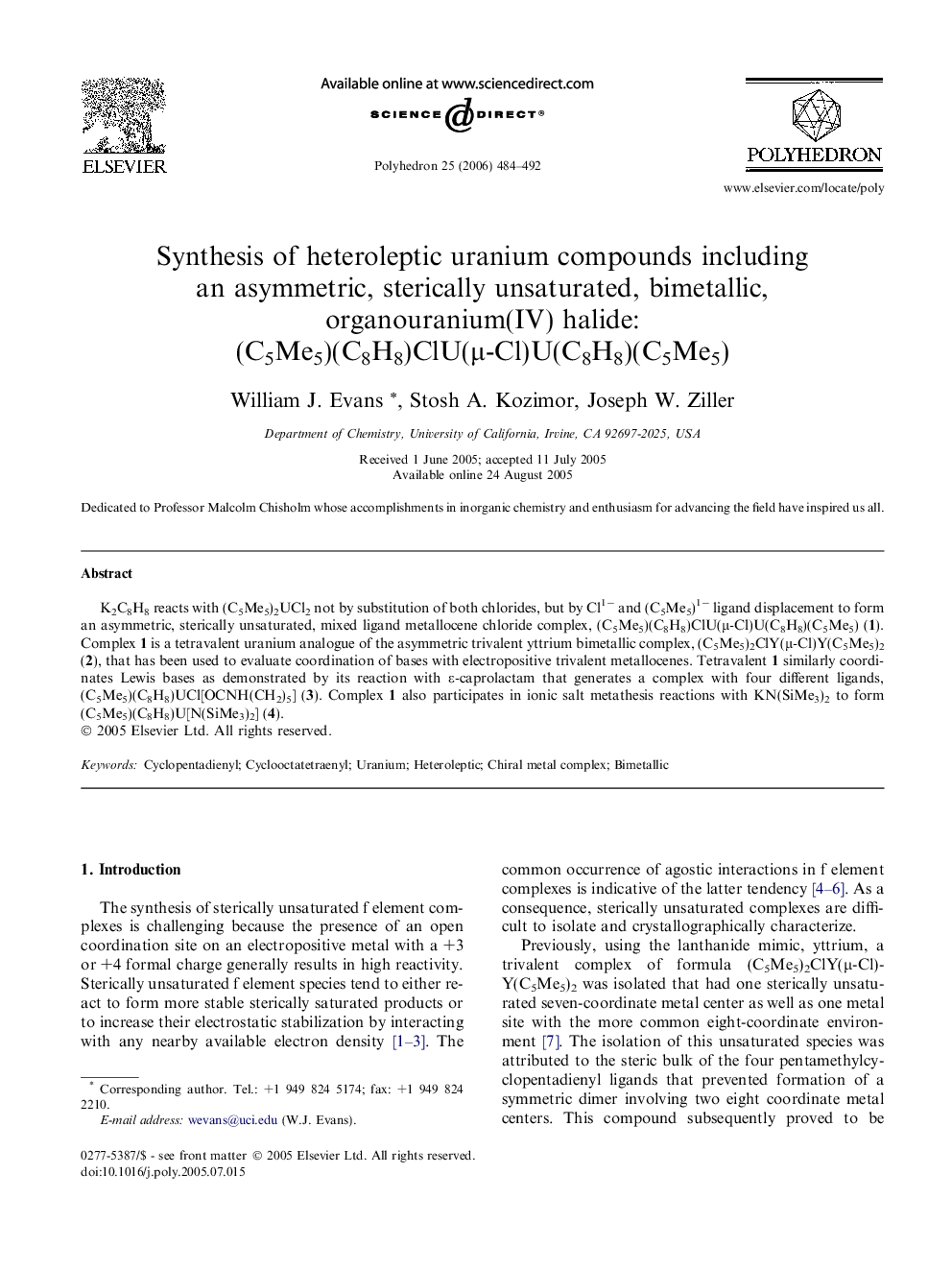| Article ID | Journal | Published Year | Pages | File Type |
|---|---|---|---|---|
| 1341028 | Polyhedron | 2006 | 9 Pages |
K2C8H8 reacts with (C5Me5)2UCl2 not by substitution of both chlorides, but by Cl1− and (C5Me5)1− ligand displacement to form an asymmetric, sterically unsaturated, mixed ligand metallocene chloride complex, (C5Me5)(C8H8)ClU(μ-Cl)U(C8H8)(C5Me5) (1). Complex 1 is a tetravalent uranium analogue of the asymmetric trivalent yttrium bimetallic complex, (C5Me5)2ClY(μ-Cl)Y(C5Me5)2 (2), that has been used to evaluate coordination of bases with electropositive trivalent metallocenes. Tetravalent 1 similarly coordinates Lewis bases as demonstrated by its reaction with ε-caprolactam that generates a complex with four different ligands, (C5Me5)(C8H8)UCl[OCNH(CH2)5] (3). Complex 1 also participates in ionic salt metathesis reactions with KN(SiMe3)2 to form (C5Me5)(C8H8)U[N(SiMe3)2] (4).
Graphical abstractThe synthesis of (C5Me5)(C8H8)ClU(μ-Cl)U(C8H8)(C5Me5) via an unusual (C5Me5)1− displacement reaction is described as well as its structure and reactivity. It readily adds a base, e.g. with ε-caprolactam, to form a complex containing four different ligands, (C5Me5)(C8H8)U(Cl)[OCNH(CH2)5]. It can also be used as a precursor to (C5Me5)(C8H8)U[N(SiMe3)2].Figure optionsDownload full-size imageDownload as PowerPoint slide
